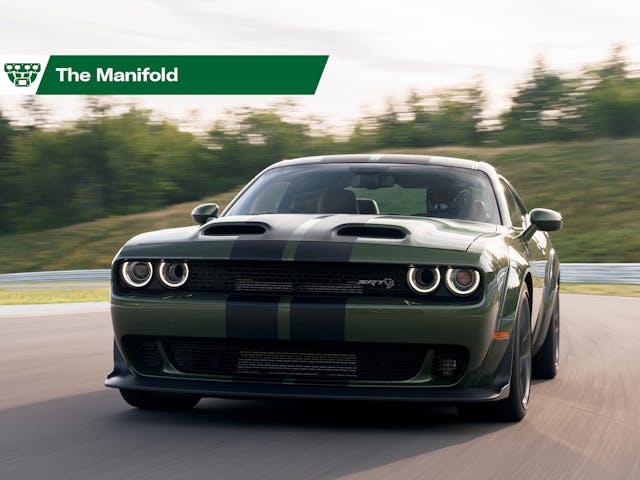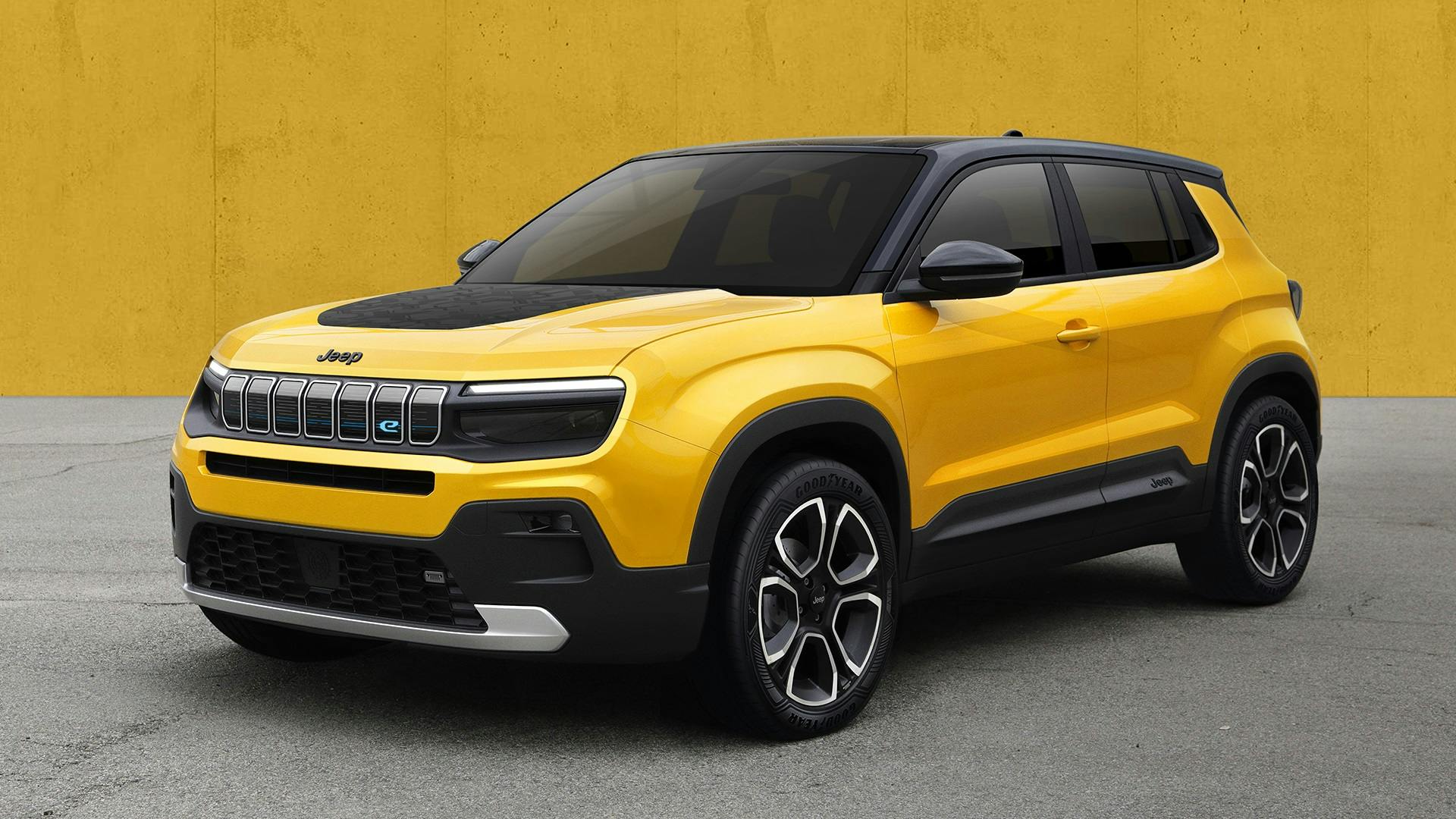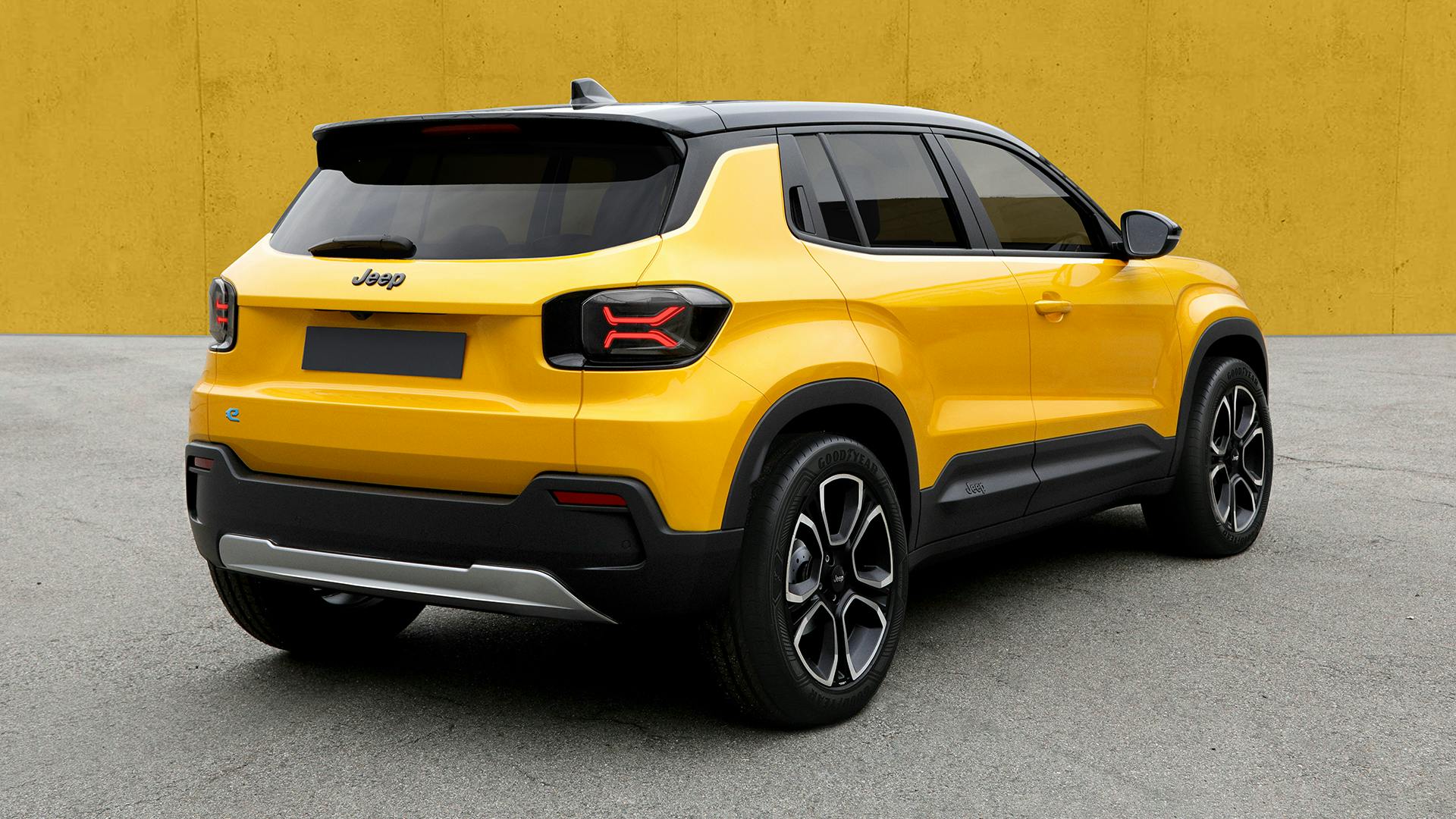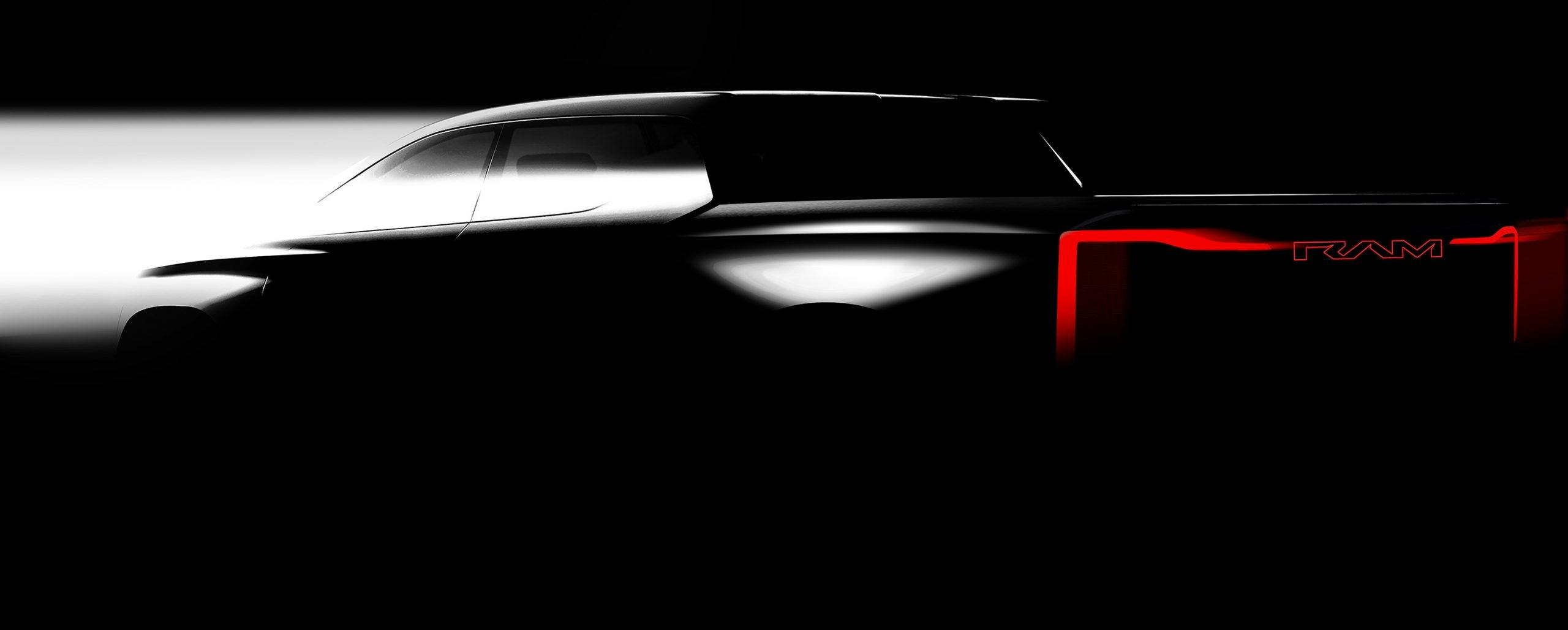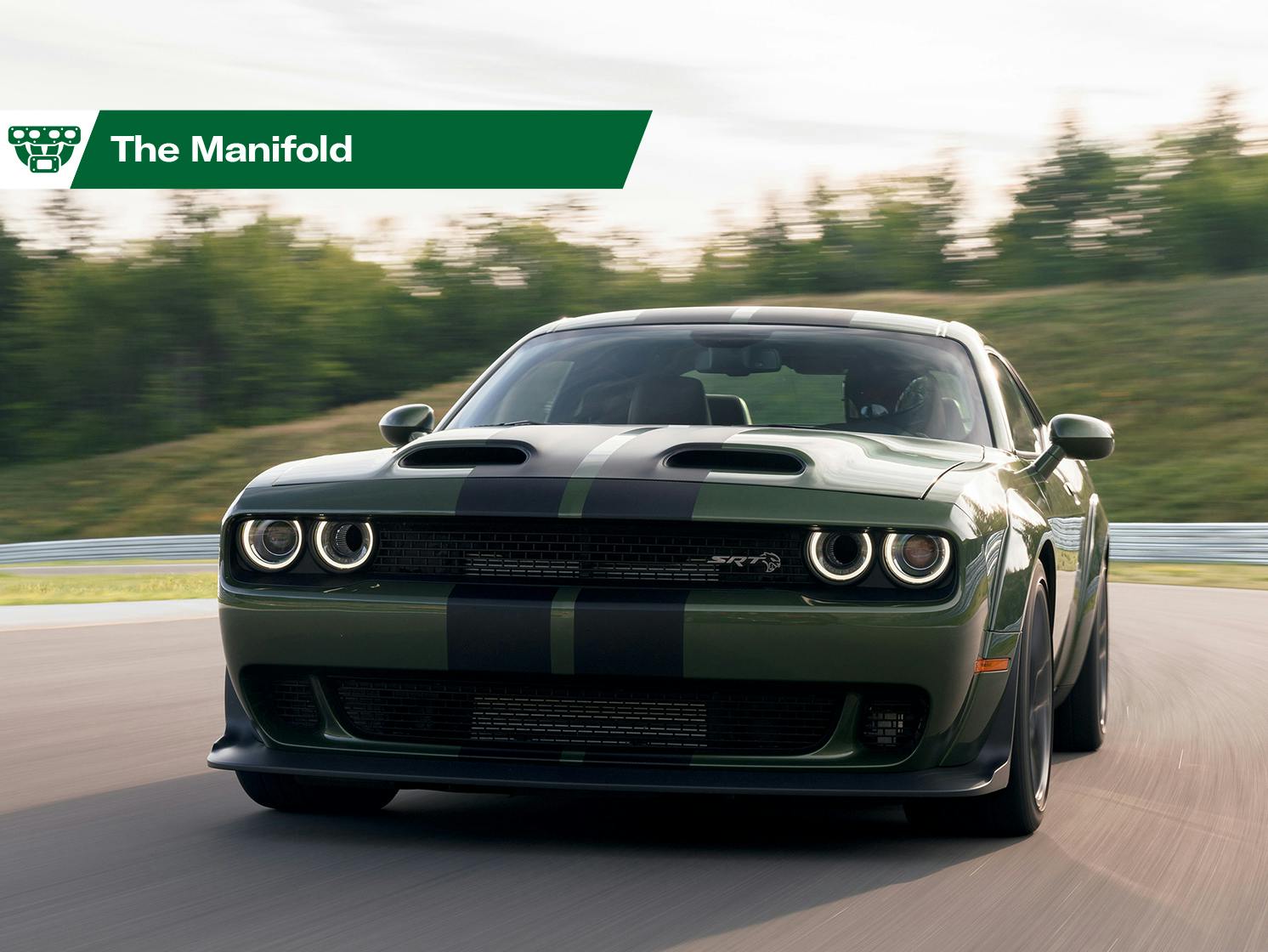Media | Articles
Challenger Hellcat pauses manual option, Jeep reveals its first EV, Ford divides to conquer
Dodge temporarily drops row-your-own option from Challenger Hellcat
Intake: Dodge’s inimitable Challenger sports one of the best option sheets anywhere in the industry, but a glance at the current 2022 model year configurator reveals a rather dismaying hole: the six-speed manual transmission is no longer an option when you’re building a tire-smoking Challenger SRT Hellcat. The situation was first reported by Road & Track. When asked about the lack of a three-pedal option, a Stellantis spokesperson noted that the move is only temporary; SRT is apparently working on a revised powertrain calibration to help the 6.2-liter, 717-horse V-8 jive with the six-speed Tremec box, but there at present is no firm date for when that revision will arrive.
Exhaust: While the ubiquitous eight-speed ZF automatic is surely the more popular option for the Hellcat, there was something commendable about giving customers a manual option. If your Challenger must have three pedals, you can still get the 485-horse, 6.4-liter Hemi V-8-powered Scat Pack or the 375-horse 5.7-liter Hemi V-8-powered R/T with a six-speed. Here’s to hoping that revised calibration gets here soon, and before the lineup flips to pure-electric power.
Take a peek at the first electric Jeep
Intake: At a press event in Amsterdam, Stellantis CEO Carlos Tavares announced a massive push for EVs in the coming decade: Globally, the 15-nameplate conglomerate is targeting 75 new BEVs by 2030. Leading the way for American customers is an all-electric Jeep SUV, the first of its kind for the darling marque. According to Tavares, the electron-powered Jeep will arrive early next year. Whether this is an electric-only version of an existing nameplate or the start of a new one, we’ve yet to see. Keen eyes will note that the cute yellow ute pictured here is very much not a Wrangler; Jeep previewed an electric Wrangler, dubbed the Wrangler Magneto, at last year’s Easter Jeep Safari. We had a chance to drive it and came away thoroughly impressed with the practicality of electric rock crawling. This year’s EJS will be held on April 9. Perhaps a more production-ready version of an EV Wrangler, which is due in 2024, will be unveiled there.
Exhaust: While it’s a bit late to the Oprah Winfrey EV party (YOU get an EV! YOU get an EV!) relative to other manufacturers—Toyota announced a 30-vehicle electric onslaught due by 2030 late last year, and GM and Ford have been dumping obscene amounts of cash into grandiose EV forecasts—Stellantis’ decision to lead with Jeep is a smart one here. The brand has remarkably broad appeal—it’s why you can pay $25,000 or four times that for something with a seven-slat grille. Expect this new eJeep to compete with Chevy’s recently announced Equinox EV, likely priced around the same $30K mark.
Ford splits ICE vehicles and EVs into separate business units
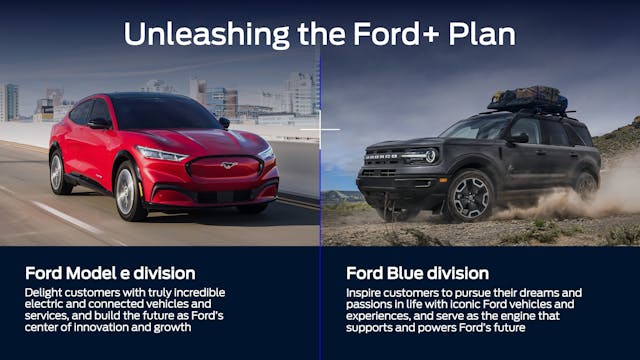
Intake: Divide and conquer seems to be the name of the game in Dearborn. Ford announced today that it will split its gas-powered vehicles and its EV division into separate business units: “Ford Blue” will now encompass all ICE vehicles, while “Ford Model e” will stand up the electric vehicles, such as the Mustang Mach-E, the F-150 Lightning, and a slew of other forthcoming EVs. Ford says the move will allow it to “compete and win against both new EV competitors and established automakers.” The two units will operate as distinct business but will share relevant technology and best practices across the Blue Oval family. Along with Ford Pro, the business unit aimed at commercial customers, all three businesses will have their own Profit & Loss statements (P&Ls) by as early as next year.
Marketplace
Buy and sell classics with confidence
Exhaust: The ongoing development of EVs has sparked a wave of newcomer companies, from Tesla, Rivian, and Lucid to Faraday Future, Fisker, and others. Splitting the EV business into its own unit is, in Ford’s eyes, essential to remaining agile enough to compete against smaller startups that don’t suffer the large-scale product planning, production, or other aspects that established legacy automakers manage. Speaking with CNBC, Ford CEO Jim Farley explained the move clearly “The reality is, our legacy business was holding us back. We had to change.”
Ram teases 1500 EV due in 2024
Intake: As part of its Dare Forward 2030 business plan, Stellantis announced that it that will have an all-electric Ram 1500 on the market in 2024. The teaser images don’t give us much to go on, but Ram promises that its EV 1500 will outperform existing electric pickups in the places customers care about: range, payload, and charging times.
Exhaust: With the Rivian R1T, GMC Hummer EV, and Ford F-150 Lightning out now and the Silverado EV poised to hit the road next year, Ram may be a bit late to the EV pickup party. That might not matter though; truck buyers are fiercely loyal and if Ram delivers on those aforementioned promises, it could win some new customers of its own. We’ve previously heard that Ram is contemplating a range-extender on some of its electric pickups to woo those that are on the fence regarding range. If so, that may give the brand a significant edge.
This glutton for punishment owns 25 Aston Martin Lagondas
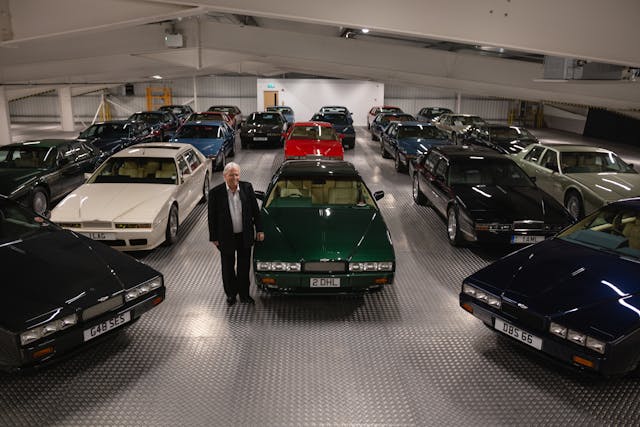
Intake: Roger Dudding, the keeper of Europe’s largest private car collection, now owns a quarter of all the Aston Martin Lagondas in Britain. Although 645 of the famously-unreliable William Towns wedges were built, only around 100 remain in the U.K., and 25 of those are on display at Dudding’s Studio434 collection in Hertfordshire, north of London. Dudding has amassed more than 500 vehicles dating back to the early 1900s, and his love of the eccentric extends to forgotten marques such as Clyno, which made cars, vans, and motorcycles in the 1920s and 1930s before disappearing. Other highlights include an AC 378 GT Zagato prototype, a Jaguar XJ200, one of only two Railtons, and one of the first Ferrari Dinos off the production line. Studio434 isn’t open to the public, but is available for private visits from car clubs.
Exhaust: One would think that owning one Lagonda would be enough trouble, so we can only imagine the difficulties Dudding has had in keeping 25 of them going. According to howmanyleft, barely 30 of the 100 Towns’ troublemakers are actually road registered and running in the U.K.
